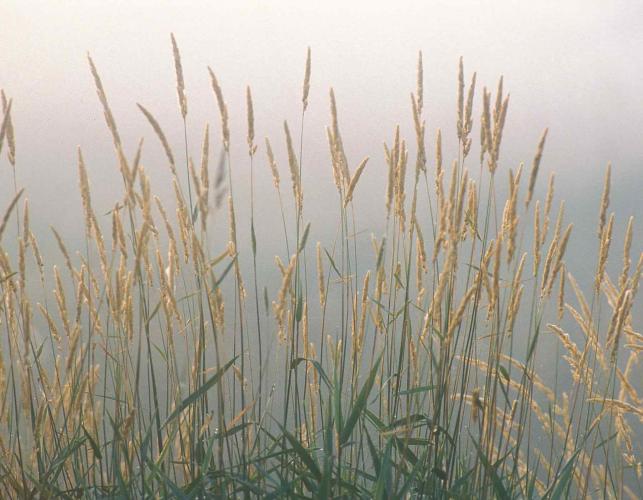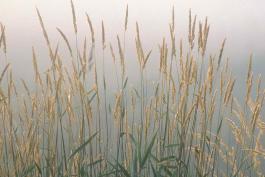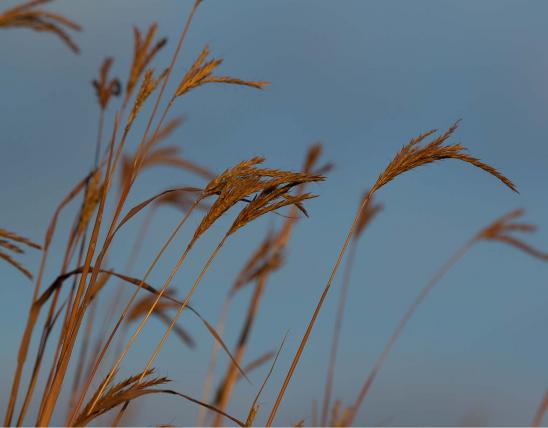
Reed canary grass is native to Europe, Asia, and North America, and it varies quite a bit. Our native Missouri version, for instance, is quite different from the Eurasian type that has been widely introduced — and which has proven to be highly invasive.
Reed canary grass is a cool-season perennial wetland grass that spreads via a dense rhizome system into clumps or colonies. Stems are erect, hairless, with gradually tapering leaf blades 3½ to 10 inches long and ¼ to ¾ inch in width. Flowering clusters are dense, compact, branched, spike-like, erect to slightly spreading, and 3–16 inches long with branches 2–12 inches long. Leaf blades are flat and are rough on both sides. A large transparent membrane (the ligule) is visible if you pull the blade slightly away from the stem. Seeds are shiny brown.
Similar plants: Our native ecotype of reed canary grass is not easily distinguished from the invasive Eurasion ecotype, but it typically does not form dense stands, and it coexists with other native vegetation in high-quality moist prairies. Reed canary grass may also resemble our native bluejoint grass (Calamagrostis canadensis) and nonnative orchard grass (Dactylis glomerata).
Height: 2 to 9 feet.

The aggressive Eurasian ecotype is found statewide and is spreading tremendously.
Habitat and Conservation
This species is native to Europe, Asia, and North America. The introduced Eurasian ecotype is invasive, but the native varieties are not. Occurs in wet to dry habitats with best growth on fertile and moist or wet soils, including marshes, wet prairies, wet meadows, fens, stream banks, and swales. It has been planted widely for forage and for erosion control. This grass is one of the first to sprout in spring, and it forms a thick rhizome system that dominates the subsurface soil.
Status
Invasive. Reed canary grass is native to temperate regions of Europe, Asia, and North America (including northern Missouri). Decades ago, the Eurasian ecotype was selected for its vigor and has been planted throughout the United States since the 1800s for forage and erosion control. It has become naturalized in much of the United States.
Life Cycle
Spreads aggressively by prolific seed production and creeping rhizomes. The plant produces leaves and flower stalks for 5-7 weeks after germination in early spring, then spreads laterally. Growth peaks in early summer, with a second spurt in fall. The shoots collapse in midsummer, forming an impenetrable mat of stems and leaves. The seed heads ripen in midsummer and shatter when ripe. Seeds are dispersed from one wetland to another by waterways, animals, people, and machines.
Human Connections
This grass has been planted for hay and forage, to prevent soil erosion, and as an ornamental, but its weedy invasiveness outweighs any benefits. When it escapes from cultivation, it takes over natural ecosystems, altering animal and plant communities and even blocking waterways.
Ecosystem Connections
Reed canary grass forms dense stands that crowd out native plants, and it grows too thick to provide suitable cover for wildlife. Although used as hay for livestock, it is of little value as food for wildlife. It promotes silt deposition and can constrict waterways and irrigation canals.
























